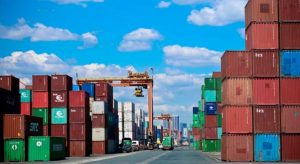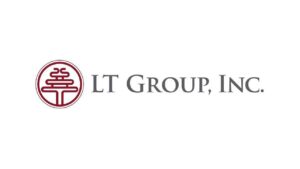Public policy and private sector participation

By Diwa C. Guinigundo
FOURTEEN years ago, Robert B. Reich, professor of public policy at the University of California at Berkeley and former Cabinet member in several Democrat administrations in the US, published an extremely interesting paper titled “Government in Your Business” in the Harvard Business Review. He made the point, and it made perfect sense even before then and now, that “managers in the private sector, accustomed to ducking behind corporate- and government-relations professionals, will need to develop a new mindset and skill set that will allow them to partner with government rather than fend it off.”
It is public trust that would define the dynamics between government and the private sector, that in the last century, it has swung from government to business, and then business to government. Reich cited the experience in the US at the end of World War I and the beginning of the Great Depression. Business was failing, and the capacity of the private sector to initiate economic recovery was clearly limited. Since public money was critical to jumpstart the economy from the time Franklin D. Roosevelt was elected president in 1932 until the late 1970s, public trust in government was the highest.
But the regulatory framework started to get complicated and ubiquitous so that it evolved into sands in the wheels of economic progress. Even the public was repelled at the size of government and its extent of intervention in business. Too much of it started to pull in growth and excessive public spending abetted high price inflation. To finance higher public spending, taxes were raised, which undermined business innovation.
President Ronald Reagan had to absorb the pendulum of public trust against government. Business and finance regained public trust after the government committed some excesses in public policy against industry. At the time of Reich’s publication, the transition reversed in favor of government again. Public policy began to shape business and investment again in the US, and might even have been in a bigger way in Europe and Japan. After all, Americans were usually litigious, more suspicious in fact of any form of meddling by public servants.
This was an ultimate expectation because no less than government action and public money were crucial in resolving the global financial crisis starting in 2008. In the US most especially, without the decisive action by financial authorities, the crisis could have been more prolonged and more debilitating for business and investment. As Reich admitted, the malfeasance in financial services triggered the erosion of public confidence in the Enrons, Adelphias, Global Crossings, Tycos, HealthSouths, Sunbeams, WorldComs, Waste Managements and ImClones of the world. Chartered accountants had admitted some negligence or paid substantial fines without admitting guilt. It cannot be denied that in the aftermath of the global financial crisis, it was reported that every major investment bank had some involvement in defrauding investors who were encouraged to invest in junk bonds.
As Reich disclosed, public opinion stood against business at the time.
The annual Trust Barometer in 2008 showed that only 38% of adult respondents trusted businesses, or a 20-percentage-point decline over a year, the lowest in a decade. Public Strategies and Politico showed that more than two-thirds of their respondents thought business regulations should be tightened.
In the past 20 years, however, it has been observed that business interests and those of society are increasingly becoming more related and more intertwined. Pressing social challenges that range from reduction of carbon emissions in the greater context of climate change; digitalization, financial technology and artificial intelligence; mitigation of poverty, income inequality and justice; financial inclusion and education; credit availability and capital market development, have influenced how private businesses design their goods and services for public knowledge and consumption.
Even in the Philippines, the long-term Philippine vision and aspirations of the Filipino people as appropriately captured in the Ambisyon Natin 2040 blueprint must have served as a long-term template for business and industry. A picture of the future that addresses such question as “Where do we want to be?” Ambisyon Natin 2040 anchors the government’s plans and programs, guided by a group of experts and representatives of the government, private sector, academe and civil society.
It would be most profitable for business and industry to similarly build their business plans around the direction of the general economy until 2040. To be sure, not everything in the blueprint will be put on stream; some will be deprioritized and some will be conveniently forgotten altogether. Some will not even be allocated the budget in favor of some fancy-sounding line items like confidential and intelligence funds, and most recently, the Maharlika Investment Fund.
With the vision of Ambisyon shaped thus, “Filipinos enjoy a strongly rooted, comfortable and secure life,” the way one should grow his business in the next decade and a half should be anchored on the following sectors that are expected to have a direct impact on the fulfillment of the blueprint. They include housing and urban development, manufacturing, connectivity, education services, tourism and allied services, agriculture, health and wellness services and financial services.
It is good that the national blueprint sounded the call not only for foundational literacies such as reading, arithmetic and science, but also for other types of personal competencies like critical thinking, problem-solving, creativity, communication and collaboration — skills many Filipinos today seem to be lacking. Character qualities are also desirable, and they include curiosity, initiative, persistence and grit, adaptability, leadership, social and cultural awareness.
What is key here is whether the requisite learning opportunities could be made accessible to as many Filipinos as possible given appropriate public policy and private sector initiative and support. Institutionalization is only possible when competencies are continuously upgraded, but this will require greater public goods. Incurring democracy deficit therefore subverts whatever learning opportunities are available given limited public funds.
The Marcos politics will make sense only if it adheres both to its Medium-Term Development Plan 2023-2028 and the Eight-Point Socioeconomic Agenda. Perhaps even only substantial, not even complete, compliance with these national economic development blueprints should be strategic enough for the private sector to be motivated and be guided accordingly. The six-year plan is more than a complete program of development covering the areas for economic and social transformation in the context of health, economic, geopolitical, environmental and technology trends and developments.
What is different from the current plan is the inclusion of the legislative agenda, or what kind of legislative interventions will be required to institutionalize the proposed changes to promote health and social development, improve education, establish livable communities, ensure food security, strengthen social protection, increase income-earning ability, modernize agriculture and agribusiness, revitalize industry, reinvigorate services, advance research and development, promote trade and investments, promote competition and improve regulatory efficiency, promote an inclusive financial sector, ensure sound fiscal management, expand and upgrade infrastructure, ensure peace and security, enhance the administration of justice, practice good governance and bureaucratic efficiency, and accelerate climate action and strengthen disaster resilience.
These are a mouthful, but required to advance economic growth on many fronts to make it sustainable and self-sustaining, high and inclusive. Being broad-based is critical to economic resiliency.
For the private sector, the inclusion of result matrices of the development blueprint should make it plain and easy to pursue the implementation of these proposals. There is greater likelihood of success if government support is assured beyond the letters of the blueprint.
The development plan could be meaningful only if the government succeeds in pursuing it within the new medium-term fiscal framework aimed at helping the Philippines attain “a faster, greener and more inclusive growth that will benefit all Filipinos.” In short, what is on the plate of the Philippines’ political leaders is to be able to deliver on both strong and inclusive economic growth and fiscal sustainability — that rare combination of boosting the economy without impoverishing the Filipino people with more taxes and higher public borrowings.
One way of looking at this public-private collaboration is in terms of the private business and industry following up on the government’s success in enacting laws liberalizing the economy particularly through the amendments to the Public Service Act, Retail Trade Liberalization Act and Foreign Investment Act. If convinced, the private sector can respond with higher levels of capitalization and investments in specific economic and financial sectors consistent with public policy and vision.
This synergy was demonstrated recently when industry groups welcomed the amendments to the implementing rules and regulations of the Corporate Recovery and Tax Incentive for Enterprises (CREATE) Act, which clarified once and for all that export-oriented companies, or those located in Philippine Economic Zone Authority or in any special zone, are exempted from paying the value-added tax. Unfortunately, some members of the House of Representatives have this wrong idea that once the CREATE law was enacted, a huge stream of investments would necessarily come. Even the implementing rules have to be thoughtfully and cleverly crafted.
Let the annual budget process also establish the platform for greater collaboration between the government and private sector, and public trust to grow. Private economists and analysts should try and drill down the slogans of the Budget department to find out whether the priorities in the development blueprints are carried over to the budget priorities, and properly budgeted. Civil society could only hope against hope that public spending is excised of unnecessary fat and of opportunities for corruption.
Almost two years ago, we wrote that based on some estimates, corruption or for some, “rent seeking,” could deny us a 6.6% increase in investment to GDP ratio or a 1.65% increase in annual per capita GDP (ES De Dios and RD Ferrer, “Corruption in the Philippines: Framework and Context, January 2000). One year before this publication, we also cited then Deputy Ombudsman Cyril Ramos who computed that the Philippine government had lost about P1.4 trillion in the previous two years, or P700 billion a year, or about 20% of the national budget. With higher levels of corruption over the years and inflation, the numbers could only overwhelm. The cost of doing business in the Philippines is inflated by corruption.
Thus, good governance is critical to restoring public trust and in soliciting private investment here and abroad. It’s something that does not magically appear from slogans or foreign trips, but says a lot about return on investments.
It would also be useful for policy makers to be cognizant of the various global risks including the more volatile and more fragmented world economy. What we could expect from such setting is the wider amplitude of capital flows that is more destabilizing of emerging market economies like the Philippines. Their governments had resorted to different strategies and policy tools in the past. On this, the International Monetary Fund (IMF) in the past three years pioneered in developing both theoretical and empirical bases for what it calls “integrated policy framework.” This is a systematic analytical approach in selecting the most appropriate policy mix for managing large and unsteady capital flows and preserve macroeconomic and financial stability. The role of monetary, exchange rate, macroprudential and capital flow management policies has to be reconciled with one another as to their impact and challenges.
Our economic managers are challenged to sharpen their analytical tools in making judgment on the nature of shocks, country characteristics and initial conditions. Research on these elements is quite in abundance. Those tools, according to the IMF, are no substitute for economic adjustments, development of deep capital markets, robust corporate and bank balance sheets and of course, strong institutions. Costs and benefits must be weighed, and the uncritical pursuit of new and untested approaches avoided.
All that we are after in strengthening public and private partnerships and growing public trust is to ensure resilient and inclusive economic growth. We have a lot of development blueprints and a long list of tools of analysis and policy options. It’s the human variable that makes those blueprints either workable or simply a pipe dream. It’s the human variable that choosing among the better options becomes cryptic.
Didn’t Sir Isaac Newton say: “I can calculate the motion of heavenly bodies, but not the madness of people.”
Diwa C. Guinigundo is a former deputy governor for the Monetary and Economics Sector of the Bangko Sentral ng Pilipinas (BSP). He served the BSP for 41 years. In 2001-2003, he was alternate executive director at the International Monetary Fund in Washington, D.C. He is the senior pastor of the Fullness of Christ International Ministries in Mandaluyong.




